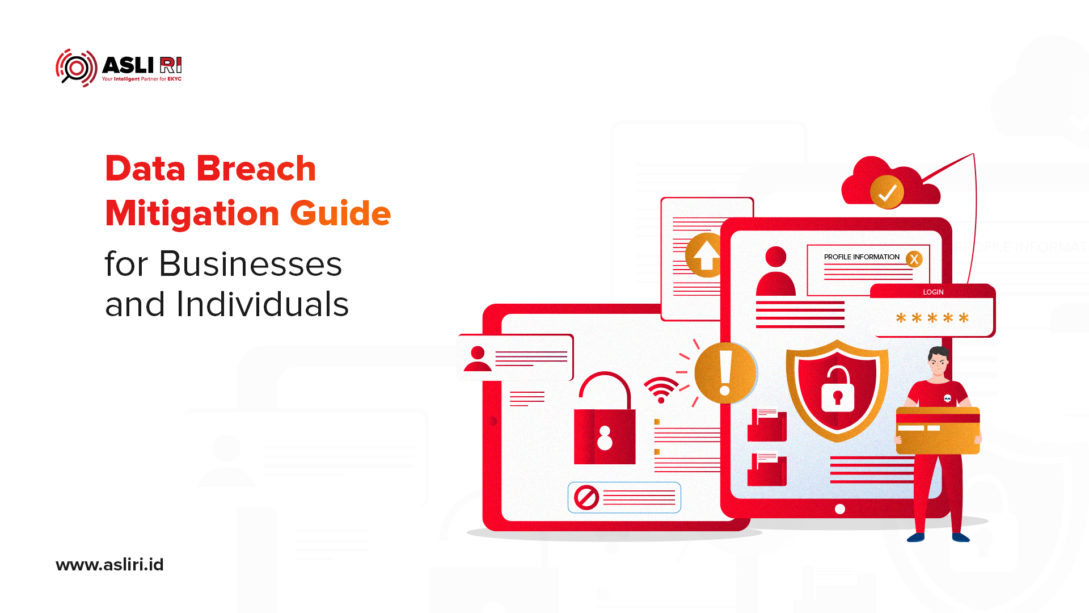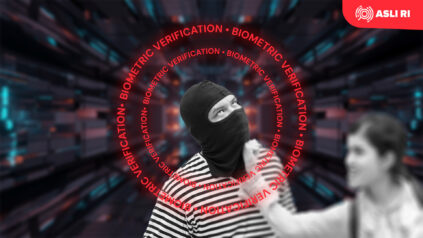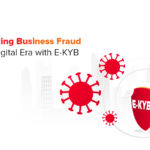Renowned and experienced hacker, Bjorka, has once again sent shockwaves through the Indonesian online community with yet another significant data breach. This skilled individual first gained notoriety in 2022 when successfully infiltrating the databases of millions of users from BPJS Ketenagakerjaan, PeduliLindungi, and MyPertamina.
Recently, Bjorka’s activities resurfaced, drawing attention from cybersecurity watchers and netizens alike. This time, it was Twitter user and cybersecurity expert, Teguh Aprianto (@secgon), who raised the alarm. Teguh Aprianto stumbled upon a disturbing screenshot on the dark web—a listing of 34 million Indonesian passport data attributed to Bjorka. The gravity of the situation is further highlighted by the mere $10,000 price tag for the 4GB worth of stolen data.
The implications of this latest breach are deeply concerning, and the potential consequences for the affected individuals cannot be underestimated. With such sensitive personal information available for exploitation, identity theft, and other cybercrimes are a significant threat. In this article, we delve into the particulars of Bjorka’s latest breach and examine possible measures to fortify data protection. Understanding the technical aspects of the breach and adopting robust security practices can help safeguard against future cyberattacks of this magnitude.
What is a data breach and how vulnerable are we?
According to IBM, data breach refers to an incident in which unauthorized individuals gain access to confidential information and data. While the terms “data breach” and “cyberattack” are often used interchangeably, it is essential to recognize that not all data breaches involve cyberattacks, and not all cyberattacks result in data breaches. Data breaches pose a significant security risk as stolen data, often numbering in the millions, can be exploited for malicious purposes, such as identity theft, where the stolen data is used to open fraudulent bank accounts or apply for loans. Additionally, data breaches can be leveraged for terrorism, enabling attackers to track and target organizations or groups.
Regrettably, we are all vulnerable to data breaches. Reports from IBM indicate that in 2021, there were over 150 billion breached records, implying that the average person experiences a data breach every 19 seconds. Specifically, in the US alone, more than 203 million users were impacted by data breaches in 2022, highlighting the widespread impact of such incidents.
The graph above from IT Governance illustrates the percentages of reported data breaches per sector in the first quarter of 2022. According to the data, the healthcare and health sciences sector, the public sector, and the technology sector are the most vulnerable to data breaches during this period.
This finding raises serious concerns due to the nature of the data stored in these sectors. Healthcare and health sciences handle sensitive information, including medical records and personal data of individuals. Public sector organizations also hold a wealth of confidential data related to citizens, government operations, and critical infrastructure. Similarly, the technology sector deals with vast amounts of user data, making it a prime target for cybercriminals.
The Impact of Data Breach
Data breaches bring about various disadvantages for both organizations and individuals, including:
- Financial Loss: Data breaches necessitate thorough investigations that can be financially burdensome for organizations.
- Reputation Loss: Breaches can erode customer trust, leading to reduced sales and difficulties in attracting new investors.
- Privacy Loss: Breached data can expose personal and sensitive information, making individuals vulnerable to identity fraud and other crimes.
- Legal Liabilities: Data breaches can result in fines, penalties, and lawsuits, leading to substantial legal liabilities.
According to IBM’s 2021 Cost of a Data Breach Report, data breaches incurred an average cost of $4.24 million per incident, representing a 10% increase from the previous year. Notably, the healthcare industry experienced the costliest data breaches in 2021, followed by the finance, pharmaceutical, and technology industries.
Can these breaches be mitigated?
In light of the escalating threat landscape, organizations and individuals must adopt robust cybersecurity measures to prevent and mitigate data breaches. This includes implementing strong access controls, encryption, regular security audits, employee training on data security best practices, and proactive monitoring for suspicious activities. As technology advances, cyber threats evolve as well, making continuous improvement and vigilance in data protection essential in safeguarding against data breaches.
Collaborative efforts between the public and private sectors to share threat intelligence and promote best practices can also play a crucial role in fortifying our collective defense against data breaches. By investing in cybersecurity measures and fostering a culture of security awareness, we can take significant strides toward mitigating the impact of data breaches and protecting our sensitive information from falling into the wrong hands.
Please tell me how..
Mitigating data breaches is of paramount importance to ensure the safety of customer and business data. A data breach can be a costly and devastating incident that jeopardizes the integrity of a business. Employing various strategies can significantly reduce the risk of data breaches.
First and foremost, educating employees about data security is crucial since they are often the weakest link in the security chain. Educating them on the significance of using strong passwords and recognizing suspicious activities can diminish the vulnerability to data breaches. Implementing robust security measures is equally vital, which may involve employing firewalls, antivirus software, and data encryption systems. Regularly updating software is recommended as it includes security patches that can protect against breaches.
Staying informed about the latest threats is essential, as it fosters awareness and education on recent instances of data security threats, enabling proactive steps to protect data. Additionally, having a well-prepared plan in place in the event of a data breach is crucial. The plan should outline how to contain, manage, investigate, and inform affected individuals to minimize the impact.
Maintaining awareness of one’s data is also crucial. This can be achieved by regularly backing up data to safeguard against loss or corruption during a data breach. Utilizing password managers helps create and manage strong passwords for various accounts. Connecting only to trusted devices on the network and using secure websites during online purchases enhances data protection. Enabling two-factor authentication provides an extra layer of security for accounts, and checking if one’s data has been breached through websites like https://haveibeenpwned.com can be beneficial.
Moreover, advancements in technology, including artificial intelligence, offer potential solutions to combat data breaches. One such technology is electronic Know Your Customer (E-KYC) with Biometric Verification. E-KYC employs cutting-edge facial recognition, document checks, and liveness checks to verify a person’s identity securely. The use of minimal digital information in E-KYC reduces the likelihood of data breaches. Additionally, E-KYC with Biometric Verification can detect fraudulent activities, flagging attempts to open accounts using fake IDs or information obtained from data breaches.
Mitigation, a step in the right direction for data security
In conclusion, data breaches present formidable challenges to data privacy, demanding proactive and comprehensive measures to protect sensitive information. The relentless evolution of technology underscores the need to stay ahead of hackers who constantly seek to exploit vulnerabilities.
To effectively mitigate data breaches, a multi-faceted approach is essential, encompassing secure data practices, employee education, and the integration of cutting-edge technologies like e-KYC with Biometric Verification. By embracing these advanced solutions, businesses can bolster their data security, streamline their business processes, and fortify their defenses against potential threats, including adversaries like Bjorka.
At ASLI RI, we are dedicated to empowering organizations with biometric-powered e-KYC, incorporating facial recognition, document checks, and liveness detection to verify identities with utmost accuracy and security. By adopting our e-KYC with Biometric Verification solution, businesses can minimize the risk of data breaches and protect their customers’ sensitive data, fostering trust and confidence among their stakeholders.
Take a step toward a more secure future by exploring the innovative capabilities of e-KYC with Biometric Verification from ASLI RI today. Together, we can build a safer digital landscape and safeguard the integrity of your valuable data.
asliri biometric verification data breach mitigation eKYC
Last modified: August 28, 2023











